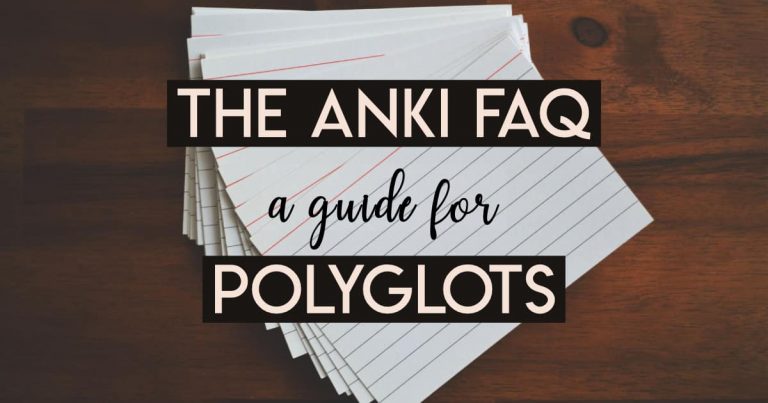For in Spanish — Por vs Para, and When to use Which
The preposition “for” has a wide variety of uses. The Cambridge dictionary accounts for around fifteen different meanings for “for”; which, as you can imagine, makes it kind of difficult to translate into other languages.
This means we can’t answer “how to say for in Spanish” with a simple word translation — we have to translate by context.
By and large, you can generally use por or para as “for” in Spanish. But you have to be aware of what you’re trying to say.
We’ll break down all of the different uses of for in Spanish with plenty of examples so you’ll know exactly which “for” to use!
You might also like
- How to say “when” in Spanish
- How to say “funny” in Spanish
- Our recommended Spanish language resources
For in Spanish at a Glance
Most Spanish learners will know that there are two main ways to use the preposition “for” in Spanish: por and para.
But how to use these prepositions isn’t obvious! It’s common for Spanish learners to mistakenly use one instead of the other.
And then there are a few other convenient ways of translating the concept of “for”, some of which you’ll see below.
To best understand when to use which, let’s look at the following general uses of the preposition “for”.
For Definition | For in Spanish | Example Sentence (Eng) | Example Sentence (Sp) |
Intended to be given to | Para | There’s a message for you. | Hay un mensaje para ti |
Having the purpose of | Para | These boots are made for walking | Estas botas están hechas para caminar |
Because of or as a result of something | Por | He’s famous for his amazing voice. | Él es famoso por su increíble voz. |
Amount of time or distance | Por Durante | We walked for three miles. We stay there for a couple of days | Caminamos por tres millas Nos quedamos allí durante un par de días |
Occasion or at the time of | Para | Did you buy her something for her birthday? | ¿Le compraste un regalo para su cumpleaños? |
In support of | A favor de | I’m for gender equality. | Estoy a favor de la igualdad de género |
In order to help someone | Por | What can I do for you? | ¿Qué puedo hacer por ti? |
In relation to someone or something | Para | This book is good, but it’s not for me. | Este libro es bueno, pero no es para mí. |
Getting in exchange | Por | I bought it for $10. | Lo compré por $10. |
Representing a company, country, etc | Para | She plays for the Sweden national team. | Ella juega para la selección de Suecia. |
In the direction of | Para | She got on a plane for Madrid. | Ella se embarcó en un avión para Madrid. |
As a side note, the prepositions por and para don’t always translate back to “for” in English. The confusion goes both ways!
For example, estamos por llegar means “We’re about to arrive”, and “por fin” means “finally”.
This just reinforces that you often have to translate phrases by context.
All the Ways to Say For in Spanish

Intended to be given to: Para
When using for to talk about something you might give to someone, whether it be a gift or a message, you would use para.
Spanish
- Hay un mensaje para ti.
- Compré un regalo para mi madre
- Ella dejó una generosa propina para el camarero
English
- There’s a message for you.
- I bought a present for my mother
- She left a generous tip for the waiter
Having the purpose of: Para
The preposition para is used when you mean “the purpose or the use of something”.
Spanish
- Estas botas están hechas para caminar.
- Estamos recolectando dinero para la Cruz Roja.
- Queremos una mesa para dos.
English
- These boots are made for walking.
- We’re collecting money for the Red Cross.
- We want a table for two.
Because of or as a result of something: Por
When we talk about the reason or the result of something, we use por.
Spanish
- Él es famoso por su increíble voz.
- Ella recibió un premio por su investigación
- Él fue preso por robo
English
- He’s famous for his amazing voice.
- She received a prize for her research
- He went to jail for robbery
Amount of time or distance: Por, Durante
Both por and durante are used to mean “for” in Spanish, when talking about time or distance. Let’s take a look at some example sentences for por.
Spanish
- Estuvo callado por dos horas
- Caminamos por tres millas.
English
- He was quiet for two hours
- We walked for three miles
The other way to say for in Spanish when speaking about time is durante. In Spanish, durante has a meaning strongly associated with time. Durante also means “during”.
Spanish
- Ella durmió durante todo el viaje.
- Nos quedamos allí durante un par de días.
English
- She slept for the whole trip.
- We stayed there for a couple of days.
Again, you don’t necessarily translate durante back to “for” in every case. For example, the phrase durante la semana means “during the week”, and doesn’t involve the word “for” in English at all.
Occasion of or at the time of: Para
If you’ve done something for an occasion, an event or a point in time, you’d use para.
Spanish
- ¿Le compraste un regalo para su cumpleaños?
- Arreglamos una cita para la semana próxima,
- Ya tengo planes para Año Nuevo.
English
- Did you buy her something for her birthday?
- We arranged a date for next week
- I already have plans for New Years.
In support of or in agreement with: A favor de
When talking about being in favor or in agreement with something, the phrase a favor de is appropriate. It translates directly to “in favor of” in English.
Spanish
Estoy a favor de la igualdad de género
English
I’m for gender equality
In order to help someone: Por
Por is used when talking about doing something for someone, or helping someone.
Spanish
- ¿Qué puedo hacer por ti?
- Lo hice por mis hijos
English
- What can I do for you?
- I did it for my children
Getting in exchange: Por
If you are using “for” in Spanish when talking about exchanging goods or services, you would use por. It is used commonly when talking about buying something.
Spanish
- Lo compré por $10.
- Le doy una golosina por cada examen que aprueba
English
- I bought it for $10.
- I give her candy for each exam she passes
Representing a company, country, etc: Para
Use para when referring to someone representing a company, a country, a group, etc…
Spanish
- Ella juega para la selección de Suecia.
- Él trabaja para Corporate Inc.
English
- She plays for the Sweden national team.
- He works for Corporate Inc.
In the direction of: Para
If referring to the direction of something, particularly if you’re going somewhere, para is used.
Spanish
- Ella se embarcó en un avión para Madrid.
- Él sigió los carteles para la estación
English
- She got on a plane for Madrid.
- He followed the signs for the station
Alternatively, you could also use the Spanish preposition hacia, which means “toward”.
Conclusion
As you can see, the answer to how to say “for” in Spanish is not an easy one. Luckily, you usually only have to decide between para and por. If you find this a little challenging, you are not alone.
With enough practice, you’ll start to understand the differences and over time, figuring out which “for” to use will feel natural.






